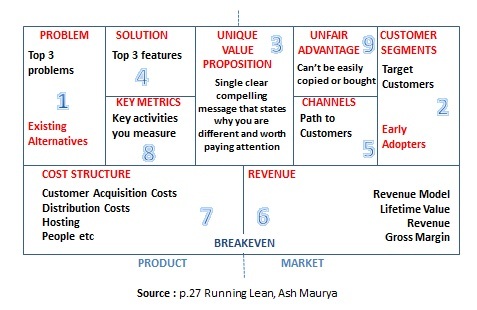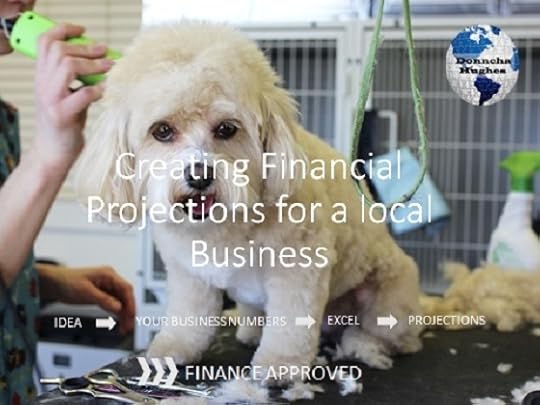Donncha Hughes's Blog: Blog of Donncha Hughes, page 5
March 30, 2019
What Enterprise Ireland are looking for in a New Frontiers Phase 2 Application in 2019?
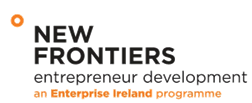 Are you participating on one of the Enterprise Ireland New Frontiers Phase 1 programmes being delivered by the Incubation Centres in the Institutes of Technology in Ireland? If yes, you may have started completing your Phase 2 application. As a trainer on the programmes in WIT, IT Sligo and GMIT, I would like to share some thoughts on what I think Enterprise Ireland are looking for in a New Frontiers Phase 2 participant /business. Originally published in 2013, this article has been updated and revised in 2019.
Are you participating on one of the Enterprise Ireland New Frontiers Phase 1 programmes being delivered by the Incubation Centres in the Institutes of Technology in Ireland? If yes, you may have started completing your Phase 2 application. As a trainer on the programmes in WIT, IT Sligo and GMIT, I would like to share some thoughts on what I think Enterprise Ireland are looking for in a New Frontiers Phase 2 participant /business. Originally published in 2013, this article has been updated and revised in 2019.
Potential Scalability
Enterprise Ireland funds and co-ordinates the €4.2m New Frontiers programme, the aim of which is to spawn new companies that will be eligible for Enterprise Ireland’s high-potential start-up (HPSU) supports
Silicon Republic, May 2012
Enterprise Ireland has a fantastic track record of supporting HPSUs (High Potential Startup Companies). New Frontiers is an investment in creating a pipeline of potential HPSUs across all regions in Ireland. The ability potential to create jobs in Ireland is the number one requirement. These Value Creation and Value Realisation equations presented below, as espoused by Tony O’Kelly, New Frontiers Programme Manager in GMIT, will assist us to drill down to see how this ‘potential‘ is assessed at an early stage.
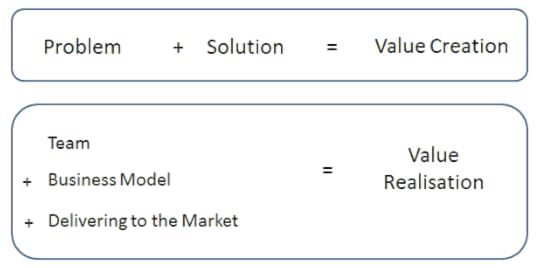 #1. Addressing a Problem Worth Solving
#1. Addressing a Problem Worth Solving
most startups fail not because they don’t manage to develop and deliver a product to the market; they fail because they develop and deliver a product that no customers want or need.
Steve Gary Blank – The Four Steps to the Epiphany: Successful Strategies for Products that Win
The very first issue for every early stage startup is to identify ‘a burning problem’ for a specified customer segment. In Running Lean, Ash Maurya presents the three stages of a startup.
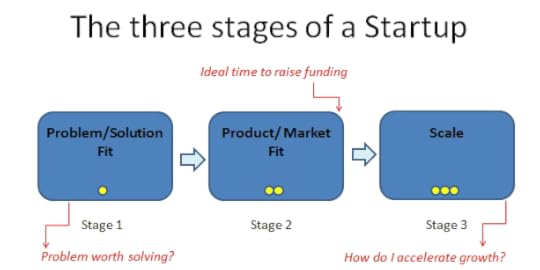 Source: Adapted from Figure 1.3 Page of Ash Maurya’s Running Lean on page 8
Source: Adapted from Figure 1.3 Page of Ash Maurya’s Running Lean on page 8
I suggest that applicants to New Frontiers Phase 2 should focus on showcasing in their application that they have achieved Problem/Solution fit.
You need to ‘get out of the building’ and talk to potential customers. You need to figure out if potential customers and end users have a problem worth solving – will they pay for your solution and are they already paying for some solution. Is this a ‘must have’ rather than a ‘nice to have’ offering. The key at the early stage is to ask customers to identify the problems that they are experiencing rather than to ask them what they think the solution should be or entail.
#2. A viable solution
My background is Marketing. I have met with lots of startups so I have a working knowledge of technology. In 99% of cases, if there is a problem, a team of scientists or engineers or other experts can find the solution given sufficient resources. I suggest that applicants to Phase 2 should focus on proving in their application that they have the wherewithal to develop a viable solution (as opposed to creating a demo). They will also need to highlight how this solution can be protected and not easily copied (Intellectual Property is a huge advantage). It is also important to explain the technology without too much jargon. One way to do this is to outline a Use Case Scenario for a typical customer.
#3. Market Niche
The first two elements of Tony’s formula: Problem and Solution combine to create Value for a Specified Target Customer Segment.The easiest way for New Frontiers Phase 2 Applicants to demonstrate that they have identified a market niche is to cite relationships with Reference Customers, whether they be in business (B2B) or consumer (B2C) markets.Secondary research outlining market size, trends and major competitors will complete the picture. The ideal scenario is a growing market or sub-market where customers and third parties value innovation as opposed to focusing exclusively on cost.
The value that you create for your customer can take many forms. For B2B, the easiest value to communicate is when your solution leads to increased Sales, or results in cost (also measured in time) savings. For B2C, value results from a gain of something positive or a reduction in something negative. But there is no need to focus exclusively on ‘logical’ value or serious problems. There is a difference between what people ‘need’ and what they ‘want’. Businesses may feel that they need to prove that a valid need is being served. I agree with this sentiment, but would add that if you can find and access a cohort of customers with similar interests and worldviews, and can deliver on an unserviced ‘want’ in less serious domains, then there could be the basis of a sustainable business.
The key issue in the Value Creation equation is the level of pain experienced by customers. For your Phase 2 application, you will have to convince the EI panel that a Target Customer Niche is willing to pay for your solution (or iterations of it) – i.e. that their pain quotient is sufficiently high.
#4. Promoter & Team
Jim Collins in his book ‘Good to Great‘ emphasised the requirement to ‘Get the right people on the bus’. Each New Frontiers Phase 2 application will be assessed to see if the team has the mix of skills required to bring the business to the next level. Domain knowledge, technical and commercial experience and expertise will be assessed. A strong application will outline milestones that have been achieved to date as testament of the value of the current team. It is also important to identify gaps in the team and ideally how and when these will be addressed. At an early stage, start up promoters need to leverage the value of the ‘Non-traditional team’ to include mentors and experienced business advisors and professionals.
#5. Business Model
A business model describes the rationale of how an organization creates, delivers, and captures economic value…… The business model canvas is a shared language for describing, visualising, assessing and changing business models.
Business Model Generation, Osterwalder and Pigneur
A Business Model defines how a business makes money. But, it is about more than Pricing and Routes to Market. The Business Model Canvas facilitates the presentation of your business on one page by challenging you to think about 9 building blocks of every Business Model. The business model generation book uses brilliant examples to outline business model patterns and also provides techniques for creating a business model for your business.
Ash Maurya was inspired by this work to create the Lean Canvas – in this blogpost he explains why he replaced 3 of the 9 original building blocks for his canvas. The value of whichever Canvas you choose is the ability to capture the same core elements you find on a business plan, but because it fits on one page, it’s a lot more concise, portable and readable.
I highly recommend every startup to use (for free) the Leanstack.com tool. There are super step by step instructions to include videos by Ash Maurya on how to complete a canvas for your business.
#6. Focused Plan of Action
The Enterprise Ireland panel will be assessing both technical and commercial milestones in each application.
All startups are experiments – they must be in order to create something worth building. Completing a Canvas is the first step in creating a roadmap for your business. It will challenge you to ask the hard questions of your business and allow your team to sharpen its focus on what really matters. The Running Lean methodology, building on the principles outlined by Eric Ries in The Lean Startup, requires that promoters:
• First find a problem worth solving, before defining a solution
• Find early customers
• Test pricing
• Decide what goes into Release 1.0
• Build and measure what customers want
• Iterate
• Achieve product/market fit
where product/ market fit is achieved when a product solution shows strong demand by passionate users representing a sizable market.
Early Stage Business Case:
New Frontiers is designed to assist male and female entrepreneurs, who have an innovative business idea and the ambition to create a growth focused business. As a promoter your job is to submit a strong application form for Phase 2 of New Frontiers – one that presents the Early Stage Business Case (13 factors).
1. A clear and concise description of the Technology based product or service to be developed
2. Attractive market opportunity – size, trends etc
3. A clear pain statement as to why customers will purchase the solution – differentiation (sustainable competitive advantage)
4. Promoter demonstrated relevant qualifications, experience and domain knowledge (and that they will benefit from the Phase 2 programme)
5. Team members with relevant skills and expertise matched to clear team roles
6. Team has startup and business development expertise and track record
7. Market opportunity supported by Market Research – target markets identified and explored
8.Comprehensive Competitor Analysis
9.International potential (indicative route to market/ ambition)
10.Clearly defined business model including revenue model
11.Strategic Reference Customers
12.Milestones to date indicative of business momentum
13.Credible, achievable and challenging action plan. Proposed implementation based on evidence of past performance and achievements to date? What level of growth is anticipated in relation to turnover, employment potential etc (indicative or summary financials as opposed to detailed financial projections)
Final Point(s):
In New Frontiers, Enterprise Ireland and the IoTs have a proven model to assist startups. The progress of participant businesses over its tenure is testament to its success. As such, I highly recommend New Frontiers to startup promoters with businesses that fit the criteria.
Phase 1 is competitive. To secure a place on Phase 2, your application will have to:
Communicate the core value offered by your business to a sizable customer segment; and
Present a roadmap with realistic commercial and technical milestones in order to realise the potential of the business.
EI has not published their Weighted Selection Criteria for New Frontiers. Last year in Galway at a Pitch meetup which I facilitate, a group comprising of New Frontiers GMIT alumni and applicants who had just completed Phase 1 discussed this very issue and created this graphic – this is not endorsed by Enterprise Ireland but do you agree?
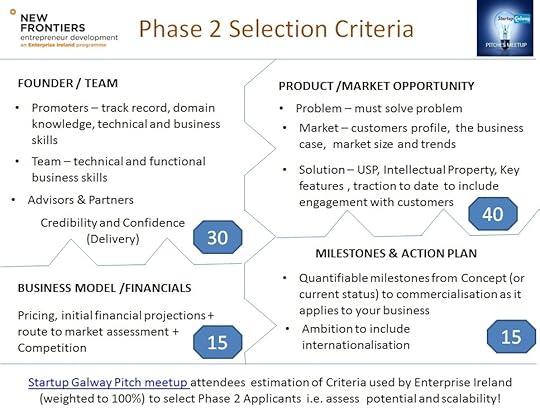 If you get called to Phase 2 Interview stage, I think that this will inform how much time should be spent on addressing and communicating the many elements of your business.
If you get called to Phase 2 Interview stage, I think that this will inform how much time should be spent on addressing and communicating the many elements of your business.
I hope that you find this blogpost of benefit when completing your Phase 2 application. All comments welcome.
regards
Donncha
@donnchadhh
p.s In April 2018, I added a new online workshop called ‘New Frontiers Phase II Application Form’ . It is one hour of videos which dissect the Phase 2 Application form – available for €50 for one year’s access – here is the introductory video (11 minutes – compressed):
http://www.startuphughes.com/wp-content/uploads/2019/03/Video-2-for-Intro-New-Frontiers-Phase-2-Application-form.mp4
Related PostsTwo hour Negotiations Workshop, DCU Invent, 10th November (Nov 5, 2015)
Donncha provides two hour, half day and full day Negotiations Workshops. Please contact to discuss ...
Ten things we probably knew and were reminded of during Startup Gathering Galway 2015 (Oct 14, 2015)
9th October Galway
Last Friday (9th October 2015) was spent meeting new business acquaintances ...
[Book Review] Disciplined Entrepreneurship : 24 Steps to a Successful Startup by Bill Aulet (2013) (Jul 13, 2015)
I have just finished reading Disciplined Entrepreneurship by Bill Aulet, Managing Director, ...
About Startup Galway Pitches Meetup (Apr 19, 2015)
In March 2015, I volunteered to become a joint Co-ordinator along with Conor O'Donovan of the ...
About The Startup Business Planning Jigsaw (Feb 23, 2015)
Managing a startup business is NOT easy. Startup entrepreneurs have lots of balls in the air. Lean ...
The post What Enterprise Ireland are looking for in a New Frontiers Phase 2 Application in 2019? appeared first on Donncha Hughes, Business Trainer, Advisor & Mentor. Thanks for signing up to my feed regards donncha p.s why not also check out my other website www.startupwebtraining.com
October 22, 2018
Thanks ShowerGem – brilliant new Shower Organiser
Several years ago (2016?) I met a young Mayo student in GMIT called Sean McGarry. He had a really cool idea which solved the problem of untidy showers in your bathroom. I went home to tell my wife about his proposed invention for a new design of Shower Organiser. She instantly recognised the problem to be tackled. This week, after many years of talking about the product to my wife, I was delighted to see Sean’s vision come to fruition with the launch of the Shower Caddy product on their fantastic new ShowerGem website. I am not noted for DIY but I am delighted to say that my 6 year old son and I successfully installed our first ShowerGem in the main bathroom. We even made a video (27 seconds) to mark the occasion.
http://www.startuphughes.com/wp-content/uploads/2018/10/ShowerGem_Small.mp4
Official ShowerGem Videos
I do hope you like our DIY video made using Windows Photos. The offical ShowerGem YouTube Channel has 3 professional videos including this one of Sean explaining how to install. Its a short video!!
The ShowerGem Business
The ShowerGem is available to buy online now. The FAQ explains that the product is 100% designed and manufactured in Ireland – great to see that manufacturing can be cost effective in Ireland.
I have followed Sean’s story over the years. The business was supported by LEO Mayo, New Frontiers Phase 1 & 2 in IT Sligo, and then secured Competitive Start Fund investment (yes I have an online training programme for CSF)
Sean and the ShowerGem team will be at the Ideal Home Show from 26th to 29th October 2018 in the RDS, Dublin.
Hope you enjoyed this post – my wife is delighted with ShowerGem even though she thinks I should have put it in a different position in the shower…. i positioned it low so that the kids could use it – comments and social shares very welcome.
Best regards
Donncha (@donnchadhh)
Related PostsThumbs up for Hubspot Academy Inbound Certification (Jan 5, 2016)
I received an email from Hubspot Academy around the 3rd week of December 2015. The email ...
Two hour Negotiations Workshop, DCU Invent, 10th November (Nov 5, 2015)
Donncha provides two hour, half day and full day Negotiations Workshops. Please contact to discuss ...
Ten things we probably knew and were reminded of during Startup Gathering Galway 2015 (Oct 14, 2015)
9th October Galway
Last Friday (9th October 2015) was spent meeting new business acquaintances ...
[Book Review Part 2] Recommended Startup Marketing Books for Fast Growth Businesses (Jul 28, 2015)
This is the second part of a two part blogpost about books directly focused on Marketing for fast ...
[Book Review] My favourite Startup Marketing Books for Fast Growth Businesses (Jul 22, 2015)
In December 2013, I wrote a blogpost selecting my four favourite Lean Startup books ...
The post Thanks ShowerGem – brilliant new Shower Organiser appeared first on Donncha Hughes, Business Trainer, Advisor & Mentor. Thanks for signing up to my feed regards donncha p.s why not also check out my other website www.startupwebtraining.com
October 6, 2018
Early Stage Startups – My Inc60 Podcast – From Idea to a Business
I recently met with Clare Carroll of Inc60 to record a podcast about the pre-startup and early stage business journey. The Lean Canvas as outlined in the book Running Lean is an ideal tool at this stage. The 30-minute podcast also discusses Sales, Mentoring, building your Team and supports for business. Thanks to Maria Staunton for mentioning my name to Clare.
Produced by
Please refer to the official Blog article by Inc60 if you are interested in any references or resoures to include Books mentioned in the podcast. This post is to complement that article setting out some salient points that I could also have talked about.
INC60 Podcast Preparation Notes
When Clare asked me to feature in a podcast we exchanged a few emails on the topics and key theme to be discussed. This is what I had in my head as being important when we started talking:
BTW, I use the Android Player FM Podcast App. Download from the App Store and subscribe for your choice of shows to include INC60. The app costs nothing to install and is free of ads. It works great with bluetooth in the Car.
Startups don’t have all the answers. They can’t – they are searching for a business model.
They need to be open to Learning. I listened to the Inc60 podcast with Kevin Kelly where he talks about his Xceptional Execution methodology. He talks about Learning as one of his four pillars in Xecution. There is two aspects to that. The first is going out talking to Customers and other market experts. The 2nd is formal training such as New Frontiers and Empower which bring mentoring, workshops and peer networking.
There is a startup process and it is important to make a plan. Particularly for technology companies, Lean Startup has been embraced as a great way to get products to market that are more likely to be successful.
Market Research was always critical and now seems much more accepted by startups – as in there is no point just coding a product before talking to the market. And that is what market research is. There is no need to get overwhelmed with it – just find ways to go out to talk to your Customers.
I would be a big advocate of Mentoring. Great way to do your planning. The fact that you can actually talk to someone who knows what you are talking about is a great benefit. They can help you to figure out what you want to know and what you want to ask of Customers.
And what you want to as about is outlined in the Lean Canvas. There are 9 building blocks. The first step is to fill in the assumptions as to what you think are the right answers. And then you go and validate those by talking to Customers.
A big concept in Lean Startup is a Minimum Viable Product or MVP. So I am a big fan of market research but MR has its limitations. The big one is will people actually buy the product (in sufficient numbers and at the price that you need them to). The only way you will find out is if you move to market testing which is not dissimilar to an MVP. I read the Steve Jobs book and I think it was in there it said that the forecast Sales for the iPod surpassed all expectations. So even Apple could not have predicted that within 14 months that 600,000 iPods would have been sold. The starting price was $399 according to MacWorld.
And this brings us to the UVP or Unique Value Proposition which combined with Customer and Problem is a big part of the Lean Canvas. What is it that will make your customer sit up and take notice of your product solution.
If your UVP is good, you can sell any product. When I deliver training on Business Models I always refer to Game Golf and their UVP which is just so good. I listened to John McGuire on Inc60 and it is a super podcast from 2015.
Which brings us to sales, Every startup promoter needs to be a Salesperson whether they want to or not.
A big part of Sales is being organized. The business needs to have a Strategy and then when you move to implementation, you need to set Goals and priorities. I wrote a blogpost for New Frontiers on Milestones for Growth Oriented Businesses. It identifies 4 milestone areas being: Product, Marketing, Finance and Team.
This is the foundation of a plan or a roadmap for your business. It is a critical ingredient when you are going looking for investment as it needs to be communicated in your business plan or pitch deck.
So the final point is that you are always selling what you and your team can do. For this you need to be convinced of the merits of the business yourself and the only way to do that is to follow the Process. You need to think like an Entrepreneur!
I hope you enjoyed both the Podcast (listen above) and this blogpost. Comments and social shares both welcomed and appreciated.
regards
donnchadh
[Podcast – 30 mins] Delighted to talk to Clare in @incsixty for this podcast on the early stage startup journey. Conversation ranged from idea generation to market research, securing first customers and building your team. https://t.co/qbJtXZtljS #Startups pic.twitter.com/Ig3zclhMSD
— Donncha Hughes (@donnchadhh) October 5, 2018
Related PostsWorking with a Startup to Prepare a Business Plan (Jan 23, 2015)
I am delighted to publish a Case Study of and testimonial for my work. It outlines in detail how I ...
Merry Christmas 2014 (Dec 18, 2014)
2014 was a great year for my business thanks to all my wonderful customers! I want to take this ...
Crafting your Value Proposition : EI New Frontiers Blogpost (Oct 19, 2014)
I was delighted to be selected as one of the first contributors to new Enterprise Ireland New ...
Please support MediStori’s Crowdfunding Campaign (Apr 7, 2014)
Today, I made a modest financial contribution as part of a Crowdfunding campaign to MediStori and I ...
Change to Charitable Donations Tax Relief (Feb 24, 2014)
I recently noticed a change to the Tax Treatment of Charitable Donations in Ireland and I thought I ...
The post Early Stage Startups – My Inc60 Podcast – From Idea to a Business appeared first on Donncha Hughes, Business Trainer, Advisor & Mentor. Thanks for signing up to my feed regards donncha p.s why not also check out my other website www.startupwebtraining.com
September 7, 2018
Online Training to Create Financial Projections for your Local Business
I am delighted to announce that I have published an online training programme called ‘Creating Financial Projections for a Local Business‘. One year access is €50 including VAT.
(adsbygoogle = window.adsbygoogle || []).push({});
You a startup promoter or small business owner who needs to create financial projections for your business to apply for a loan to a bank? Or you need projections to apply for financial support from the Local Enterprise Office or Leader.
Check out this Financial Projections Online Workshop
The Online Workshop Approach
The online workshop takes a step by step approach to creating Financial Projections. A case scenario called TLC Mobile Dog Grooming is used to illustrate the steps involved. An Excel template is provided for download with all the formulas embedded.
The Introductory Module presents details of the fictitious TLC Mobile Dog Grooming business to include assumptions relating to activity that will allow us to calculate Turnover. It also presents the assumed costs of the business. The promoter needs to buy a Van and fit it out. So he needs a loan from the bank.
Module Two provides a quick overview or introduction to Accountancy to set the scene. This quickly (12 minutes) explains Cashflow, P&L and Balance Sheet. I am not an accountant but i do a lot of projections. BTW, here is the P&L that is produced for TLC by the end of the workshop.
click to enlarge
Module 3 and 4 work through the Excel template to create the Cashflow forecast for 3 years, P&L for 3 years and the 3 year Balance Sheet. The smart excel template does a lot of the work as it automatically copies figures from one sheet to the next. So you don’t actually put any figures into the Balance Sheet …… but you do need to double check that it balances. BTW, here is the Balance Sheet that is produced for TLC by the end of the workshop.
click to enlarge
This is a relatively simple and hopefully understandable example but the process outlined here is sufficiently advanced that once completed you will be able to use the Template and what you have learned along with figures for your own business to create straightforward financial projections for your local business.
I think that creating robust financial projections is of fundamental importance to startups. It helps firstly to determine the viability of the business and whether you should proceed. It secondly presents the value of the business and highlights funding required and the return achievable. I deliver training workhops on Financial Projections for New Frontiers in IT Sligo and Letterkenny IT (LyIT) and appreciate the difficulty that startups have with projections. I hope this online programme solves a problem for you and provides good value.
Check out this Financial Projections Online Workshop – Register for FREE Account to access Free Trial Content
Module 3 (of the 5 modules) is available as part of the Free Trial – here is an extract.
http://www.startuphughes.com/wp-content/uploads/2018/09/Module-3-Financial-Projections-Extract.mp4
The full module is 11 minutes and is avialable as part of the Free Trial (have to set up an account on my Thinkific powered website).
Best wishes
Donncha (@donnchadhh)
p.s See my earlier blogpost on how to make your business plan look professional which explains how to copy financial projections from Excel into MS Word.
Related PostsFinance for Startups Part II : Accessing Finance (Mar 11, 2014)
In my most recent post I stated that I firmly believe that knowledge of finance is a fundamental ...
Finance for Startups : Part I (Mar 4, 2014)
I believe that knowledge of finance to include: an ability to understand and communicate your ...
How to make your business plan or tender document look professional? (Feb 6, 2014)
I write several business plans for clients every year and I also regularly create tender documents ...
Setting up my new HP (Windows 8) Laptop (Nov 1, 2013)
Information Technology is very important for small business. A new laptop for a small or home ...
How to present data in a visual format? (Jul 8, 2013)
Bullet charts are a superb data visualisation tool - if you want to present results of a metric ...
The post Online Training to Create Financial Projections for your Local Business appeared first on Donncha Hughes, Business Trainer, Advisor & Mentor. Thanks for signing up to my feed regards donncha p.s why not also check out my other website www.startupwebtraining.com
NEW – Online Training to Create Financial Projections for your Local Business
I am delighted to announce that I have published an online training programme called ‘Creating Financial Projections for a Local Business‘. One year access is €50 including VAT.
This ONE HOUR online programme is for you if:
You a startup promoter or small business owner who needs to create financial projections for your business to apply for a loan to a bank? Or you need projections to apply for financial support from the Local Enterprise Office or Leader.
Check out this Financial Projections Online Workshop
The Online Workshop Approach
The online workshop takes a step by step approach to creating Financial Projections. A case scenario called TLC Mobile Dog Grooming is used to illustrate the steps involved. An Excel template is provided for download with all the formulas embedded.
The Introductory Module presents details of the fictitious TLC Mobile Dog Grooming business to include assumptions relating to activity that will allow us to calculate Turnover. It also presents the assumed costs of the business. The promoter needs to buy a Van and fit it out. So he needs a loan from the bank.
Module Two provides a quick overview or introduction to Accountancy to set the scene. This quickly (12 minutes) explains Cashflow, P&L and Balance Sheet. I am not an accountant but i do a lot of projections. BTW, here is the P&L that is produced for TLC by the end of the workshop.
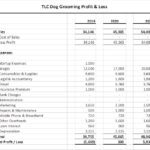
click to enlarge
Module 3 and 4 work through the Excel template to create the Cashflow forecast for 3 years, P&L for 3 years and the 3 year Balance Sheet. The smart excel template does a lot of the work as it automatically copies figures from one sheet to the next. So you don’t actually put any figures into the Balance Sheet …… but you do need to double check that it balances. BTW, here is the Balance Sheet that is produced for TLC by the end of the workshop.
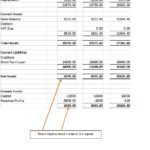
click to enlarge
This is a relatively simple and hopefully understandable example but the process outlined here is sufficiently advanced that once completed you will be able to use the Template and what you have learned along with figures for your own business to create straightforward financial projections for your local business.
I think that creating robust financial projections is of fundamental importance to startups. It helps firstly to determine the viability of the business and whether you should proceed. It secondly presents the value of the business and highlights funding required and the return achievable. I deliver training workhops on Financial Projections for New Frontiers in IT Sligo and Letterkenny IT (LyIT) and appreciate the difficulty that startups have with projections. I hope this online programme solves a problem for you and provides good value.
Check out this Financial Projections Online Workshop – Register for FREE Account to access Free Trial Content
Module 3 (of the 5 modules) is available as part of the Free Trial – here is an extract.
http://www.startuphughes.com/wp-content/uploads/2018/09/Module-3-Financial-Projections-Extract.mp4
The full module is 11 minutes and is avialable as part of the Free Trial (have to set up an account on my Thinkific powered website).
Best wishes
Donncha (@donnchadhh)
p.s See my earlier blogpost on how to make your business plan look professional which explains how to copy financial projections from Excel into MS Word.
Related PostsAbout Startup Galway Pitches Meetup (Apr 19, 2015)
In March 2015, I volunteered to become a joint Co-ordinator along with Conor O'Donovan of the ...
Date for Diary : ‘Business Application Writing for Success’ (Mar 31, 2015)
As you may know, I am a member of the SCCUL Mentors programme. This provides pro bono mentoring for ...
About The Startup Business Planning Jigsaw (Feb 23, 2015)
Managing a startup business is NOT easy. Startup entrepreneurs have lots of balls in the air. Lean ...
Do HPSU’s deliver? Yes! (Aug 20, 2014)
I am often asked by startup entrepreneurs what makes a High Potential Startup Company or HPSU? as ...
How to address ‘Exit Strategy’ in your Business Plan? (Jul 31, 2014)
I am often asked what text should be included in an investor ready business plan under the section ...
The post NEW – Online Training to Create Financial Projections for your Local Business appeared first on Donncha Hughes, Business Trainer, Advisor & Mentor. Thanks for signing up to my feed regards donncha p.s why not also check out my other website www.startupwebtraining.com
August 16, 2018
20 Business Building Ideas from ‘The 1-Page Marketing Plan’ by Allan Dib [Book Review & Infographic]
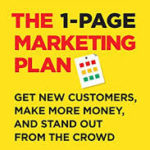
click to enlarge
The 1-Page Marketing Plan
Get New Customers, Make More Money, And Stand Out from the Crowd
By Allan Dib
I recently received this Marketing book in the post for free. I had been asked nicely in advance if I would review it. I like reading business books so I agreed (no fee involved). The book is called The 1-Page Marketing Plan. It is written by Allan Dib from Australia and it is a very worthwhile read.
In the conclusion, Allan states that no one knows how good your products or services are until after the sale. Before they buy, they only know how good your marketing is. Put simply, the best marketer wins every time.
The book is complimented by a website with resources to include the 1-Page Marketing Plan canvas downloadable on provision of an email to Successwise.com
In the book acknowledgements, the author states that he is a collector of elegant ideas as opposed to a marketing and business genius. He explains that his approach is to closely copy the things that make others successful – he has collated these ideas to make the 1 Marketing Plan system so that you can benefit from a treasure trove of proven business-building ideas.
How to create your One Page Marketing Plan
Allan Dib has created a simple step-by-step process for creating a marketing plan for your business that is literally one page. Simply follow along and fill in each of the nine squares that make up his 1-Page Marketing Canvas.

1 Page Marketing Plan Canvas – click to enlarge
I have always liked the concept of a 1 Page Marketing Plan – I have a very popular download on my website with a resource of the same name – so I was interested to see how Allan would address the topic. The structure of the book (9 chapters) matches the canvas facilitating you to complete the Canvas one block at a time. You will have a complete 1 PAGE Marketing Plan for your buisness when you finish reading the book. I didn’t actually complete a Canvas but I will do so the next time a Client asks for assistance with their Marketing.
My review selects 20 Business Building ideas that I found interesting in the book rather than summarise each step (I found this blogpost which summarises the 9 Steps) in the Canvas.
Contents
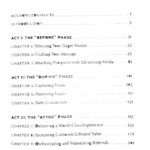
Click to enlarge Contents
The book is structured in line with the 1-Page Marketing Plan canvas. The 9 chapters are grouped into 3 Acts one for each of three phases on the journey as someone ‘Becomes Your Customer’ namely: the “Before” phase; the “During Phase”; and the “After Phase”. On page 26, Alan puts forward that ‘the marketing process is a journey we want to guide our ideal target market through. We want to guide them from not knowing we exist right through to being a raving fan customer’.
There is a brief summary at the start of each Section and Chapter (see Contents for full list). Then at the end of each chapter Actions are listed for the reader to complete for their business which refer to the 1-Page Marketing Plan canvas.
Why I liked this book?
I like two types of business books. The first is the autobiography which tell a story and shares business wisdom. I really liked Alan Sugar’s book and the Steve Jobs one – both of which I reviewed.
The second type of book that I go for, like this one, is the instructional or training guide which will include real examples to illustrate points. Examples make books easier to read and understand the key concepts. I am often asked for book recommendations when I am delivering training to startups and microenterprise. I favour books which set out a structure and have content that agrees with what I already think and know (and don’t refer to the 4Ps of Marketing). I am on record citing Traction as the best book on modern marketing tools and now I am happy to add this 1-Page Marketing Plan to my list in terms of Marketing particularly in the area of Strategy and Planning. And I would think that you should read this one first and then Traction.
I like the core tenet of this book, as summarised in the following table, that good customer oeriented marketing & sales follows the prospect through a journey that focuses on the problem, the solution and delivers the value promised.
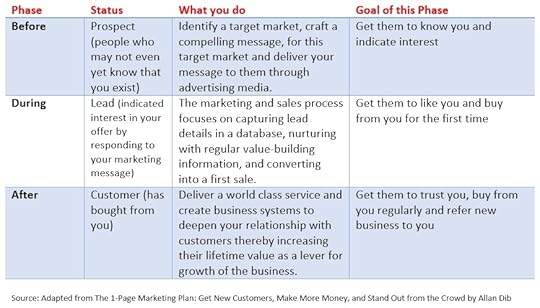
Three Phases of the Marketing Journey by Allan Dib 1 Page Marketing Plan
On page 15, the author sets out to provide the simplest, most jargon free definition of marketing.
If a circus is coming to town and you paint a sign saying “Circus Coming to the Showground Saturday,” that’s Advertising. If you put the sign on the back of an elephant and walk it into town, that’s Promotion. If the elephant walks through the mayor’s flower bed and the local newspaper writes a story about it, that’s publicity. And if you get the mayor to laugh about it, that’s public relations. And if you planned the whole thing, that’s Marketing.
20 Business Building Ideas from the 1 PAGE Marketing Plan
As someone who has a Masters in Marketing and several years’ experience in business, I don’t think I personally learned anything particularly new in this book (just an observation rather than a criticism) but it certainly got me thinking about key issues again. I really like the structure, personality and practicality of the book. Here are 20 key takeaways that struck a chord with me as I read the book:
1. Invest Time, Energy and Money in Marketing
Business owners may fool themselves into thinking that if their product is excellent, that the market will buy and that there is no need for marketing. But history is littered with technically superior products that commercially failed. He suggests that a good product is a customer-retention tool. If we give our customers a great product or service experience, they’ll buy more from us, they’ll refer people to us and they’ll build the brand through positive word of mouth. However, before customer retention, we think need to think about customer acquisition (AKA marketing). Another big mistake small business owners make when it comes to marketing is to blindly mimic what large successful competitors in their industry are doing!
The most successful entrepreneurs always start with Marketing
2. Strategy First – be ‘Special’ for your Target Customer
Targeting everyone with your product or service is a terrible idea – for your business and your customer. It might seem logical to not exclude any potential customers but if you focus too broadly your marketing message will become diluted and weak. When trying to target everyone you tend to kill your ‘specialness’ and become a commodity bought on price. Whereas operating in a niche market as a specialist tends to makes price irrelevant as you will be perceived differently by your potential customers. A specialist is paid handsomely to solve a specific problem for their target market.
A great way to figure out your ideal target market (who you want your customers to be) is to complete a PVP index – Personal fulfilment (P), Value (V) to the Marketplace and Profitability (P). So do you enjoy providing this product or service, will ‘they’ pay you well for it, and is it profitable – remember it’s not about the “turnover”, it’s all about the “left over”.
The author emphasises that understanding the difference between Strategy and tactics is absolutely key to marketing success. Marketing is the strategy you use for getting your ideal target market to know you, like you and trust you enough to become a customer. The point is made that much of the stuff usually associated with marketing are tactics. Strategy is the big-picture planning you do prior to the tactics. A common trap which small business fall into is getting caught up in the latest tactics or hot marketing tactics like SEO, video, podcasting, pay per click advertising and so on and never figure out the big picture of what they’re actually trying to do any why.
Understand the difference between Strategy & Tactics
3. Intimately understand your target customer- enter the conversation going on in their head
Putting the right stuff in front of the wrong people or the wrong stuff in front of the right people is one of the first marketing mistakes made by business owners (p.63) Figure out your ideal target market so that Marketing can be directed towards that audience. Selecting a niche harnesses the power of focus – ideally you are looking for a target market where a lot of people are looking for a solution to a specific problem. Once you dominate a niche, you can expand your business by finding another profitable and highly targeted niche, then dominate that one too.
Get into the mind of your prospect in order to create an Avator (also referred to as a persona) for your target market. Avators should be created for each type of decision maker or influencer. Not only have you to be specific on demographics such as gender, age and geography but you have to understand both what keeps them awake at night in terms of frustrations but also the ONE thing they crave above all else. Examples are given from page 42 to 44.
The author explains that one of the easiest methods of finding out what your Prospects want is to ask them. This can be done through a survey or more formal market research. He adds:
“It should be noted that most people don’t know what they want until they’ve actually been presented with it. Also, when people are doing surveys or responding to market research, they do so with logic; however, purchasing is done with emotions and justified with logic after the fact. So you need to supplement asking with observing.”
Figure out your ideal target market to focus your marketing efforts
4. Succinctly convey the problem that you are solving
A strong USP (Unique Selling Proposition) must be designed to attract prospects before they’ve made a purchase decision. A USP formula is provided to ensure that you craft your elevator pitch while being customer/problem focused rather than you/product focused:
You Know {problem}? Well, what we do is {Solution}. In fact, {proof}
Several examples are provided to include this one for Electrical Engineering: “You know when there are power outages that bring down critical systems in large businesses? Well, what I do is install backup power systems for companies that rely on having a continual supply of power for their operations. In fact, I installed the system at XYZ Bank, which has resulted in them having 100% uptime since the system was installed.” Chapter 2 has a super section on how to ‘Create an Irresistible Offer’. A key step is to ‘enter the conversation already going on in Your Prospect’s Mind’ as per point 2 above.
Before you ever write a single word of copy, you must intimately understand how your target market thinks and talks, the kind of language they use and respond to, what kind of day they have and the conversation that goes on in their minds.
5. Create Irresistible Direct Response Offers
Marketing for small business must be Direct Response oriented. The goal of all advertising must be to elicit a response. The goal of your ad is for your prospect to say, “Hey that’s for me”.
There are many components to crafting a compelling offer (outlined in Chapter 2). Taking the lazy, ill-thought out road of “10% off” or similar crappy offers is akin to throwing your marketing dollars in the thrash.
BTW, this starts with selecting a name for your Business, Product or Brand that makes it automatically obvious what the product, service or business is. Always choose clarity over cleverness. The author has a great answer when people say, ‘What about great brands with unusual names like Nike, Apple, Skype, Amazon and so on? … read page 77 to find out his response.
6. Choose appropriate media to convey your message
Advertising media is the vehicle you’ll use to reach your target market and communicate your message. It’s the bridge that connects your offer to your target. Later in the book, Allan says ‘The art and science of being able to consistently turn a dollar of paid advertising into a dollar or more in profits through direct response marketing will make your business resilient and help you turn the tap on to rapid business growth’.
The author urges caution with the hype surrounding Social Media. On page 88 he states that ‘Many self-proclaimed social media gurus would have you believe that social media is the future of all marketing and that if you’re not dedicating most or all of your marketing resources to social media, you’re a Luddite who’ll soon be out of business’. He adds that he is not against social media and has used it successfully in many businesses but it needs to be understood in context. Social media is by definition a form of media – it’s not a strategy. A marketing campaign has three vital elements: Market, Message and Media. Always ask which type of media is right for your business? Social media is not the ideal selling environment. Being pushy and constant pitching of offers are generally considered poor behaviour on social networks. However, just like real-life social gathering, social media is a great place to create and extend relationships that can later turn into something commercial, if there’s a good fit. There are two potential traps with social media. First it can be a time suck. Some people have the perception that social media marketing is free. It’s only truly free if your time is worth nothing. Second, there’s the question of ownership – your social media page and profile is actually the property of the social network.
Build up your own marketing assets such as websites, blogs and email lists and use social media to drive traffic to these marketing assets.
7. Hire Experts
Whether you’re using traditional media like radio, TV and print or newer digital media like social, SEO and email marketing, you’ll need to understand the idiosyncrasies of each. Hire experts that specialise in whatever media you decide is right for your campaign. Don’t try to do it yourself, especially when it comes to the most expensive part of your marketing process.
8. Stop Selling and start Educating and Advising
Many new (and existing) businesses expect Sales to happen because of the mere fact that the business is in operation. Their marketing strategy is hope. And sure, they may make a small number of sales just by virtue of being there when a random prospect wanders by. But that is a guaranteed path to frustration. Many such businesses make just enough money to torture themselves to death. If we were honest with ourselves, the real problem is that many small business are positioning themselves as a commodity or ‘me too’ type of business. When you position yourself in this way your only marketing weapons are to shout as loudly as possible (which is very expensive) or to discount your prices as far as possible (which is dangerous).
Whether you’re selling freshly baked bread, accounting services or IT Support, the way you market yourself will have a dramatic impact on the clients you attract and the amount that you can charge for your services. A commonly held belief is that ‘it’s all about the product” so if you have a better product or service people will automatically be more likely to buy from your and pay more for it. While this is true to some extent, the law of diminishing returns comes into play when your product or services reaches a ‘good enough’ level. After all, how much better can your IT support or accounting services or bread be than that of your competition? Once, you’ve reached a level of competence, the real profit comes from the way you market yourself and the relationships that you develop with customers. You need to become the expert in your category or industry. You need to be perceived in the eyes of your prospects as someone who educates them and solves their problems. If you’ve got a quality product or service, what’s stopping you from positioning it at a much higher level – offering it at a premium price and attracting a higher quality of customer?
Use Positioning as a bedrock for your Trust based Sales Conversion Process
9. Develop Marketing Infrastructure
Lack of a functional marketing infrastructure will harm your business. In this blogpost extracted from the book, the author explains that ‘Some businesses have built a marketing infrastructure which constantly brings in new leads, follows them up, nurtures and converts them into raving fan customers’. Your marketing infrastructure will be made up of ‘assets’ to include your blog, lead capture websites, email marketing and podcasts. Your job is to ‘Make it Up, Make it Real and Make it Recur’ – that is come up with your marketing ideas; hire graphic designers, web developers and copywriters to make it real; then get admin help or use fulfilment services to make it recur. In addition to regular scheduled marketing activities, you need to consider event-triggered marketing activities such as what to do after meeting a potential prospect at a business event.
Create a marketing calendar that sets out what marketing activities have to happen on a daily, weekly, monthly, quarterly and annual basis, and you put those into your schedule like you would all other important business events.
10. Have an unlimited budget for marketing that works
Most businesses set a marketing budget. However, setting a limit implies that marketing as a pure expense and maybe even a waste of money. This is because most business have no real idea if marketing is working because they don’t measure results. Hence they throw (some) money at it in the hope that it’s giving some sort of positive result. The author asks, ‘If your marketing is working (giving you a positive return on investment), why on earth would you limit it with a budget?’ And if you find that such an approach leads to more demand than you can handle, then raise your prices to boost your margins and bring you a better quality of client.
‘The only time to set a marketing budget is when you’re in the testing phase. In the testing phase, I advise that you fail often and fail cheap until you have a winner. Test your headline, your offer, your ad positioning and other variables. Then, cut your losers and optimise the winners until you finally have a combination that gives you the best possible return on tec. Remember, the post offices charges you the same amount to mail a crappy direct mail piece that bombs as they do a high converting direct mail piece that pulls in millions. Once you have a winner that pulls in more than it costs you, crank up the marketing spend.“
11. Leverage Marketing Technology
Marketing infrastructure, systems and activity can leverage marketing technology to boost efficiency. The prime example is a CRM system.
12. Deliver a World Class Experience
Truly remarkable businesses get exponential results because each customer they add is not just revenue or a transaction but can be counted as recurring revenue because the person becomes an evangelist for the business. Chapter 7 ‘Delivering a World Class Experience’ looks at strategies for turning customers into raving fans who trust you, refer your business to others and can’t wait to do more business with you. These people are your Tribe (a deliberate reference to Seth Godin’s excellent book) and it is vital to have strategies for building such a following and taking great care of them.
13. Create an Outrageous Guarantee
Customers are risk averse. A guarantee that removes all risk is recommended to help your business stand out from the crowd. It comes at no cost to your business if you are committed to giving your customers excellent service and train your staff accordingly.
14. Your goal is to ensure that Customers achieve results
There is a very interesting discussion on page 159 on the need to fight to get your customers to do what they need to do to achieve results with your product or service – the analogy is used of someone buying a treadmill but never using it and complaining that it did not deliver any health or fitness benefits. You can’t let this happen with your product or service as your customers won’t derive the benefits they need. You might secure revenue but it won’t build your business. Ensuring that your Customers achieve the benefit and results they seek is part of ensuring a World Class experience.
15. Sell Them What They Want but Give Them What They Need
As outlined in chapter 2, the first step in crafting a good offer is to find out exactly what the market wants. When it comes to delivery of your product or service, we need to give our customers not just what they want but what they need. Let’s say you’re a fitness instructor. You improve people’s lives through better health, fitness and nutrition. The concept of better health is too vague, far off and long term for most people. So instead you’ve got to appeal to vanity, performance or some other specific want that the prospect has. There’s often a big difference between what people want and what they need.
You need to understand both needs and wants. They are sometimes overlapping and sometimes completely separate.
16. Work to increase Customer Lifetime Value
Chapter 8 ‘Increasing Customer Lifetime Value’ discusses strategies such as Raising Prices; Upselling; Ascension (Price Plans & Service Levels); increasing Frequency by using vouchers for repeat business; and Reactivation
17. Measure and track your marketing return
What gets measured, gets managed. Be ruthless with your ad spend by cutting the losers and riding the winners – the cost of each customer acquisition must be less than the profit generated from each customer. To know what’s losing and what’s winning, you need to be tracking and measuring. Page 192 provides an example to illustrate how a 10% improvement in three numbers generates a 431% improvement to the bottom line. So:
Aim to improve Leads, Conversion Rate and Average Transaction value by 10%.
18. Create Marketing, Sales, Fulfilment and Administration Systems
Products make you Money, Business Systems Make You a Fortune – Business systems start with documented procedures and processes that allow your business to work without you. It’s a sad situation when a business owner goes to sell their business and finds that, after putting in many years of hard work, that their business is worthless. It’s not so much that the business itself is worthless; it’s that they ARE the business and without them there is no real business to sell. Complimenting Michael Gerber’s book The E-Myth Revisited, the author outlines the Catch 22 situation where a small business owner has no time to work on the business as they are working in the business.
There are four scalable and replicable business systems needed by every business: marketing, sales, fulfilment and administration.
19. Fire Low-Value Problem Customers
Not all Customers are Equal. Page 195 explains that generally your customer base can be divided up into four categories:
The Tribe – are supporters of your business and provide healthy revenue to grow your business
The Churners – are customers who really can’t afford you on the basis of either time or money.
The Vampires – consume a massive amount of your resources compared to other customers while paying the same amount.
The Snow Leopard – might be your biggest customer, one that makes up a very large chunk of your revenue but they are rare and difficult to replicate so don’t represent a good growth strategy.
The author says that without exception, across multiple businesses and industries, he has found that it’s the low value, price-sensitive customers who complain the most, waste huge amounts of your time a and always need to be chased for payment. So:
Fire low value problem clients
20. Orchestrate and stimulate Referrals
The key to a proactive Word Of Mouth (W.O.M) strategy is to ask for the Referral. There is some nice examples presented in chapter 9 on how a business can craft a message to orchestrate referrals.
Conclusion + Infographic
So this is a very good book. As such I would recommend to any startups that I meet to include those on Start Your Own Business and New Frontiers programmes. Hope you enjoyed this post, comments and social shares welcome. Here is an infographic that i created for this post.
Download Donncha’s Infographic of 20 Business Building Ideas from the 1-PAGE Marketing Plan by Allan Dib as a 1 Page Pdf
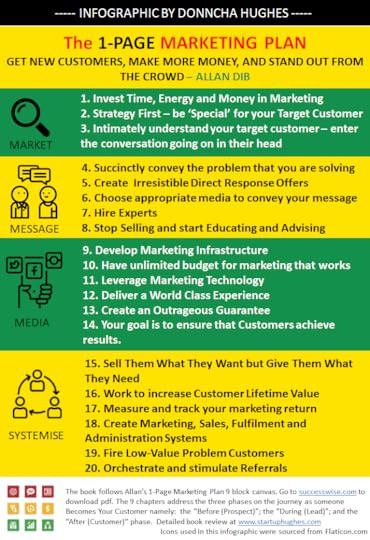
Marketing is about understanding the Market, listening to the Customer, creating a message, Communicating the offer, as the business delivers a World Class experience using best in class systems to create raving fan Customers to underpin future Growth.
Finally, if you want to listen to Allan Dib, here is an interesting one hour podcast with Louis Grenier of Everyonehatesmarketers.com
Related Posts[Book Review Part 2] Recommended Startup Marketing Books for Fast Growth Businesses (Jul 28, 2015)
This is the second part of a two part blogpost about books directly focused on Marketing for fast ...
[Book Review] My favourite Startup Marketing Books for Fast Growth Businesses (Jul 22, 2015)
In December 2013, I wrote a blogpost selecting my four favourite Lean Startup books ...
[Book Review] Disciplined Entrepreneurship : 24 Steps to a Successful Startup by Bill Aulet (2013) (Jul 13, 2015)
I have just finished reading Disciplined Entrepreneurship by Bill Aulet, Managing Director, ...
The Dip By Seth Godin : A Book Review (Feb 13, 2015)
Being the Best in the World is seriously Underrated ... Seth Godin The Dip
You might ...
Working with a Startup to Prepare a Business Plan (Jan 23, 2015)
I am delighted to publish a Case Study of and testimonial for my work. It outlines in detail how I ...
The post 20 Business Building Ideas from ‘The 1-Page Marketing Plan’ by Allan Dib [Book Review & Infographic] appeared first on Donncha Hughes, Business Trainer, Advisor & Mentor. Thanks for signing up to my feed regards donncha p.s why not also check out my other website www.startupwebtraining.com
May 1, 2018
4 Point Formula to Win funding – The Startup Pitch [Book review]
I assist startups via training and mentoring to pitch for early stage investment to include enterprise agency supports such as New Frontiers and Competitive Start Fund in Ireland. I was delighted to find a superb book by Chris Lipp called ‘The Startup Pitch : A proven formula to win funding’. At 160 pages, it is a very readable book that matches up to its promise as “the single most complete reference source for pitch skills used in today’s startup world”. The book’s UVP is spelt out on the back cover:
From the Back Cover of The Startup Pitch by Chris Lipp
This blogpost will now pick out some salient points from ‘The Startup Pitch: A Proven Formula to win Funding’ which I bought from Amazon.co.uk for £20.
Layout of The Startup Pitch
The four point pitch formula is outlined in Chapter 2 of six chapters as illustrated in graphic below adapted from the Contents section of The Startup Pitch.

6 chapters – Chapter 2 is the 4 Point Pitch Formula
The introduction stresses that there is a formula for how to pitch successfully. You don’t need to be a master presenter or persuader to win funding, it simply takes the right techniques applied consciously to capture capital.
The Four Point Pitch Formula
Raising money is the second hardest part of starting a startup – Paul Graham.
On page 21, the author Chris Lipp explains that he has identified four critical points of information that must be communicated to investors – after watching many of the best and brightest around Silicon Valley. These are Problem-Solution-Market-Business.
One begins with the problem, or the need being addressed. Then proceed to product or service that fulfills the need. The market is the target customer to whom you will offer your solution. Finally, business is all about the ways you’re going to capture that market. The book includes effective summaries on the final page. On page 55 a breakdown of Problem-Solution-Market-Business is provided in worksheet format – this can be downloaded at speakvalue.com (on provision of an email address).
Click to download from Speakvalue.com
Here is my summary of each subheading:
PROBLEM
Description … set high level context for the subject and then start your pitch with a simple problem description to capture investor attention. Starting with a clear problem orients your audience towards the solution by engaging their natural problem solution thought process. You introduce a ‘knowledge gap’ when you start by outlining a problem.
Pains … problem pains are the consequences to people or businesses with the problem. They may be high cost, inconvenience, or inability to achieve certain goals. The greater the consequences the more strongly people want a solution. The more people want a solution, the less appear you present as an investment opportunity.
Trends – page 27 social, economic and technology trends open up markets. Trends help to transition from problem to solution.
SOLUTION
USP … single sentence UVP of what you do and why you’re unique. Avoid verbose language preferring simplicity and clarity via brevity. Be concise.
Demo … your product through the experience of a hypothetical customer
Benefits … translate product features into explicit customer benefits
MARKET
Target – the market is the customer base you can reach today. Use customer personas.
Size – cite market research reports
Advantages – explain your competitive advantage over other solutions on the market
BUSINESS
Go to Market – business is how you bring your solution to market and make money. Introduce go-to-market strategy to explain how you get, keep and grow your customer base
Revenue Model – to show how you monetize from going to market
Milestones – List out past and future milestones to show accomplishments and where you’re heading.
The point is made that not all pitches are the same, and not all points are equally important to your pitch – so you don’t necessarily have to allocate equal time to each. But they all have to be addressed as these are the areas where investors will have questions so answers need to be prepared.
The formula presented in the book is very persuasive. But it does seem to omit one key element which is the Team. But that concern is resolved in Chapter 3:-
Four Elements of Influence (chapter 3)
To win funding you need more than a Pitch formula. You must prove what you Pitch is True
The author explains that the Four Point Pitch Formula is only the foundation. It’s not enough to simply describe the problem and share your solution, market, and business. You need to prove there’s a problem, prove your solution solves the problem, prove there’s a market, and prove the efficacy of your business model. He adds that the key ingredients of persuasion are credibility, audience value, data and story as per image below:

p.64 The Startup Pitch – The Four Elements of Influence
Unlike the 4 Point Pitch which flows in a linear progression, the Elements of Influence can be applied in any order to Problem, Solution, Market and Business. The book goes into sufficient detail in chapter 3 to explain each of the four elements as they apply to each of the Four Pitch Points. Here is my quick synopsis.
Credibility is your perceived knowledge and expertise regarding the topic of discussion. Show you are an expert or share expert opinions to add clarity to the Problem, the solution, the market and business.
Audience Value means tailoring your message to fit potential benefits to the listeners. Investors want to hear how your startup provides low risk high return. For instance, detailing the number of people suffering from a stated problem represents opportunity.
Data are the facts, the research, the statistics. What’s the evidence that your solution or business plan works? Data make the problem real – not just an entrepreneur’s opinion.
Story is the emotional component, the customer anecdotes, your own experience. Emotions motivate action. Make the problem real (with data), and then bring the problem to life.
The author concludes that adding credibility, audience value, data and story into the points of your pitch proves to investors that you’re worth the investment.
Make it Clear. Make it Interesting. Make it Real. Make it Meaningful #TheStartupPitch
So the Team factor particularly the credibility of the founding team is measured by your knowledge, experience, and clarity when pitching.
Other Areas Addressed in The Startup Pitch
The section on Pitch Delivery is very good – a key point being that all investor pitches are conversations.

The point is made (page 115) that practice isn’t just knowing what to say, it’s saying it out LOUD. There is no need to memorize the pitch – just make it your own.
Chapter 5 addresses how to design and create effective Slide decks.

The advice is to keep slides simple by showing only one message per slide. BTW, if anyone is looking for help with Pitch Slide preparation I highly recommend Ed Fidgeon-Kavanagh of Clearpreso.com – he has a superb track record of helping startups to raise funding. The portfolio of case studies is worth checking out.
Conclusion – Recommended Read
I highly recommend The Startup Pitch to startup entrepreneurs who are in the words of the author serious about raising funding. I will conclude by referring to a passage on page 119 about the goal of a pitch deck
Good meetings end with follow up meetings. There’s a process to winning investment, and the goal of your pitch is to proceed through this process.
Hope you found this blogpost of interest. Comments and shares on Social Media welcomed and appreciated.
Click here to check out ONLINE TRAINING – New Frontiers Phase 2 Application Form + CSF Masterclass
regards
donncha (@donnchadhh)
[images sourced from Pixabay.com – a great source of royalty free images]
Related PostsNo need to be afraid of the Irish Tax Office (Feb 24, 2011)
At the event in Clare on the 9th February last, the speaker (the finance guru) said that there was ...
Three good reasons to choose self employment (Feb 11, 2011)
I recently joined the ranks of the self employed. I had spent a few years as a public servant ...
Welcome to my blog by Donncha Hughes (Jan 11, 2011)
I hope to use this blog to tell you about how I am getting on with self employment. I also hope ...
The post 4 Point Formula to Win funding – The Startup Pitch [Book review] appeared first on Donncha Hughes, Business Trainer, Advisor & Mentor. Thanks for signing up to my feed regards donncha p.s why not also check out my other website www.startupwebtraining.com
April 13, 2018
Organise GMIT New Frontiers One 2 Ones with Phase 1 Participants
As part of the New Frontiers Phase 1 programme in GMIT iHubs, Donncha will meet participants for a One 2 One session to review their draft applications prior to final application on May 17th.
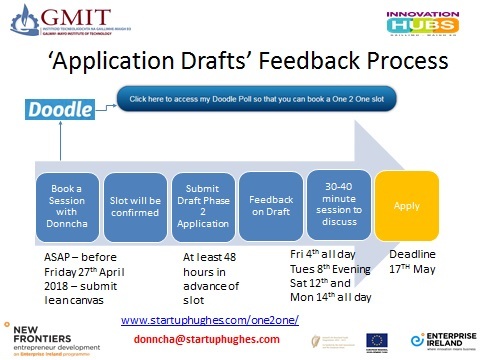
The One 2 One Timeline
All participants who wish to avail of a slot are required to send a Lean Canvas and a draft of their completed application form to Donncha at least 48 hours in advance of the selected One 2 One slot.
To book a GMIT New Frontiers Phase 1 One 2 One:
Click on button below to open up the Doodle Poll – click on the time and date you want to attend. All that is required is your name – you don’t need to set up an account. [You can only book one slot]
Please provide your email address by leaving a message on the system or email Donncha directly.
Click here to access my Doodle Poll so that you can book a One 2 One slot
Available Times & Dates (4)
The time allocated is 40 minutes -the start times are staggered by 45 minutes. The four dates in May are as follows to provide every opportunity to participants in terms of a flexible schedule:
Friday 4th May – from 10 AM
Tueday 8th May – Evening from 6pm to 9pm
Saturday 12th May – from 10 AM
Monday 14th May – from 10 AM
The venue is iHubs Boardroom in GMIT. This is on the top floor.
 Parking is provided for visitors to GMIT at Galwegians.
Parking is provided for visitors to GMIT at Galwegians.
Click here to access my Doodle Poll so that you can book a One 2 One slot
Remember to send me a message with your email address because I won’t be able to contact you otherwise.
Format for the One 2 One
Donncha will send feedback on your draft application by email in advance of the meeting. The one 2 one is then to discuss the feedback particularly how the application can be strengthened. Team members particularly all co-founders are encouraged to attend.
The key question is whether the application represents the full potential of the business concept.
Related PostsWorking with a Startup to Prepare a Business Plan (Jan 23, 2015)
I am delighted to publish a Case Study of and testimonial for my work. It outlines in detail how I ...
Merry Christmas 2014 (Dec 18, 2014)
2014 was a great year for my business thanks to all my wonderful customers! I want to take this ...
Crafting your Value Proposition : EI New Frontiers Blogpost (Oct 19, 2014)
I was delighted to be selected as one of the first contributors to new Enterprise Ireland New ...
Please support MediStori’s Crowdfunding Campaign (Apr 7, 2014)
Today, I made a modest financial contribution as part of a Crowdfunding campaign to MediStori and I ...
Change to Charitable Donations Tax Relief (Feb 24, 2014)
I recently noticed a change to the Tax Treatment of Charitable Donations in Ireland and I thought I ...
The post Organise GMIT New Frontiers One 2 Ones with Phase 1 Participants appeared first on Donncha Hughes, Business Trainer, Advisor & Mentor. Thanks for signing up to my feed regards donncha p.s why not also check out my other website www.startupwebtraining.com
April 12, 2018
CSF Online Masterclass Go Live Announcement
I am delighted to announce that my first online training programme has gone live. It is a 90 minute video based programme for people applying for CSF – €50,000 Competitive Start Fund investment with Enterprise Ireland. It is ideal for startup entrepreneurs who have applied before and were not shortlisted for the Pitch Stage on the basis of deficiencies in the application form.
Check out my new CSF Online Masterclass powered by Thinkific
Competitive Start Fund (CSF) Online Masterclass
The programme comprises 8 modules across four sections with a total of 90 minutes of video plus other download resources. When you click on the button above you will be brought to my Thinkific powered online training programme website. You will have to create an account by providing your email – but you can check out some of the content for free before purchase! Below is the introductory video (5 minutes).
http://www.startuphughes.com/wp-content/uploads/2018/04/Intro-for-CSF-Masterclass-2018-Compresed.mp4
I do hope that you check out this online training and my other blogposts about Competitive Start Fund (CSF) and/or pass on this link to startup entrepreneurs applying for CSF.
Comments and social shares welcome.
Regards
donncha (@donnchadhh)
p.s Comments in the Online Training are those of the Author and don’t neccessarily reflect those of Enterprise Ireland – Donncha is an independent online Trainer and Business Advisor.
Related PostsAbout The Startup Business Planning Jigsaw (Feb 23, 2015)
Managing a startup business is NOT easy. Startup entrepreneurs have lots of balls in the air. Lean ...
Working with a Startup to Prepare a Business Plan (Jan 23, 2015)
I am delighted to publish a Case Study of and testimonial for my work. It outlines in detail how I ...
Merry Christmas 2014 (Dec 18, 2014)
2014 was a great year for my business thanks to all my wonderful customers! I want to take this ...
Crafting your Value Proposition : EI New Frontiers Blogpost (Oct 19, 2014)
I was delighted to be selected as one of the first contributors to new Enterprise Ireland New ...
Do HPSU’s deliver? Yes! (Aug 20, 2014)
I am often asked by startup entrepreneurs what makes a High Potential Startup Company or HPSU? as ...
The post CSF Online Masterclass Go Live Announcement appeared first on Donncha Hughes, Business Trainer, Advisor & Mentor. Thanks for signing up to my feed regards donncha p.s why not also check out my other website www.startupwebtraining.com
December 22, 2017
Christmas Message 2017 – Scratch Animation
My christmas message 2017 was inspired by the kids summer camp when they learned scratch – this is an admittedly limited attempt but I hope you take a few seconds and that it makes you smile!

This is a screenshot – click below to play
The flash scratch animation does not play on Mobile so I have recorded the screen using Screen Cast O Matic – video is 18 seconds.
http://www.startuphughes.com/wp-content/uploads/2017/12/ScratchXmas.mp4
The interactive flash animation definitely plays using Firefox if you enable Flash but not on Chrome or Internet Explorer. Here’s the link to the project on Scratch
Press the Green Flag to start.
You then have option to click on the Snowman with your mouse
Press the space bar!!
Simply refresh the browser (F5) when the animation is finished to reload.
Happy Christmas from Donncha Hughes (and my creative assistants)
To all my customers, the many startup entrepreneurs who allowed me to share their journey this year, collaborators in business, and the enterprise ecosystem stakeholders that I engage with on an ongoing basis across Ireland, I wish you all a Happy Christmas and a Peaceful New Year.
Best regards
donncha(@donnchadhh)
Related PostsPlease support MediStori’s Crowdfunding Campaign (Apr 7, 2014)
Today, I made a modest financial contribution as part of a Crowdfunding campaign to MediStori and I ...
Change to Charitable Donations Tax Relief (Feb 24, 2014)
I recently noticed a change to the Tax Treatment of Charitable Donations in Ireland and I thought I ...
Running a small self employed service business (Jan 28, 2014)
A self employed person running a professional services business has a different outlook to most ...
All about Startup Digest Galway (Jan 24, 2014)
Startup Digest Galway is new - it aims to feature all startup related events taking place in ...
Seasons Greetings (Dec 20, 2013)
Wishing everyone that I know in business and from other walks of life a brilliant Christmas holiday ...
The post Christmas Message 2017 – Scratch Animation appeared first on Donncha Hughes, Business Trainer, Advisor & Mentor. Thanks for signing up to my feed regards donncha p.s why not also check out my other website www.startupwebtraining.com
Blog of Donncha Hughes
- Donncha Hughes's profile
- 4 followers


